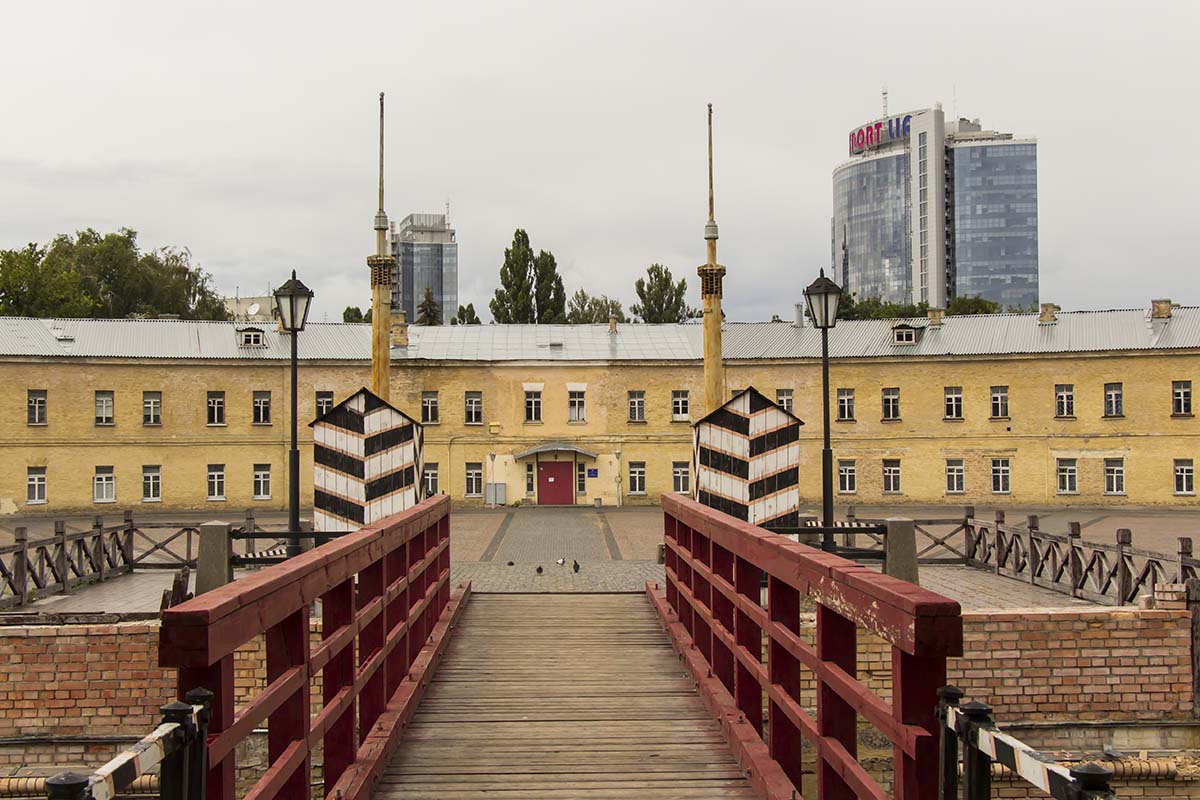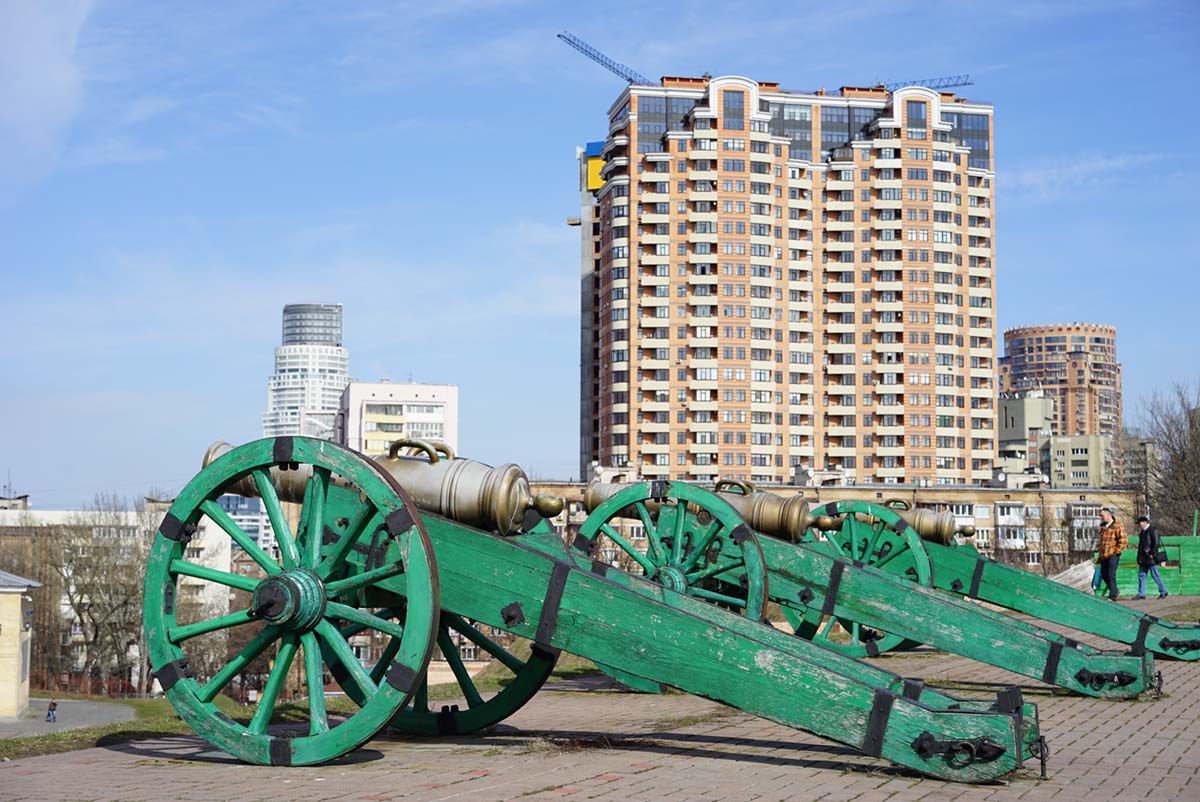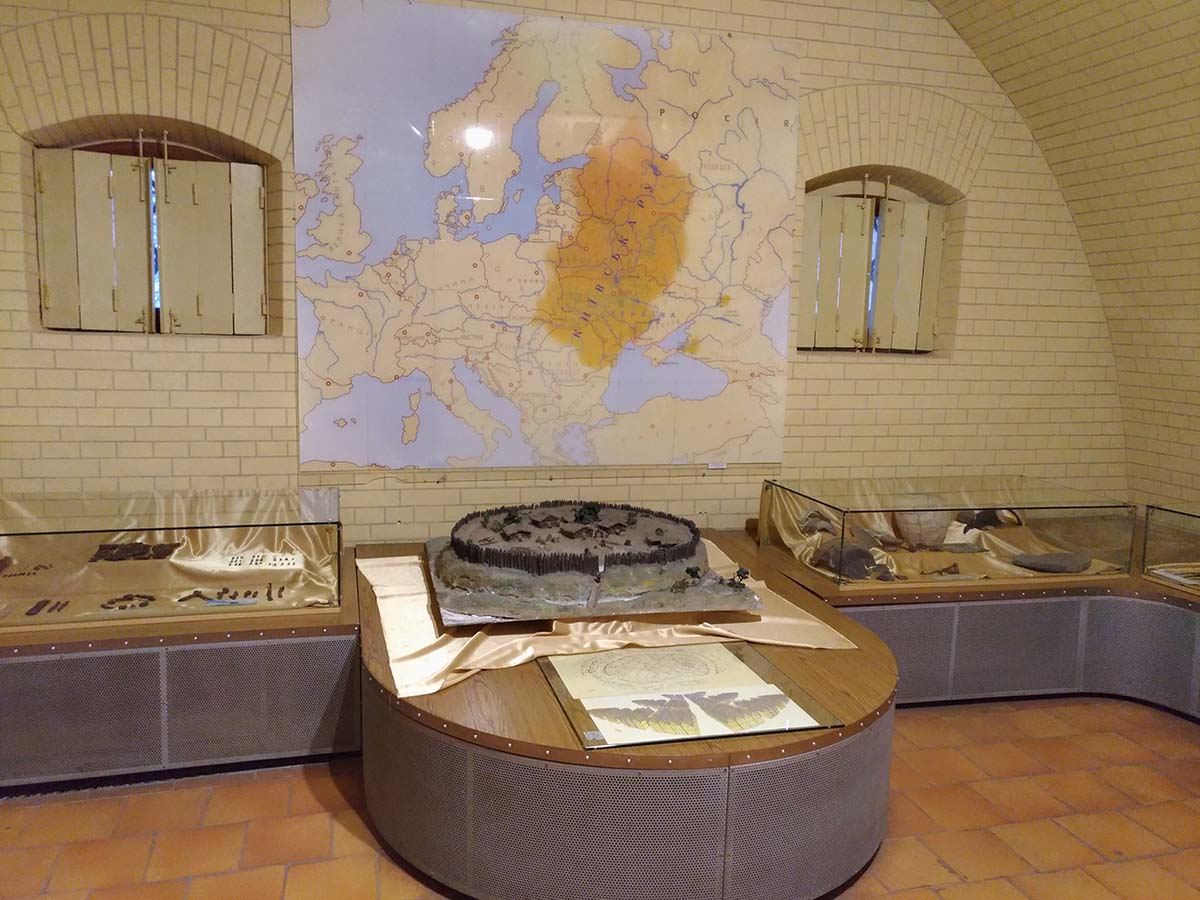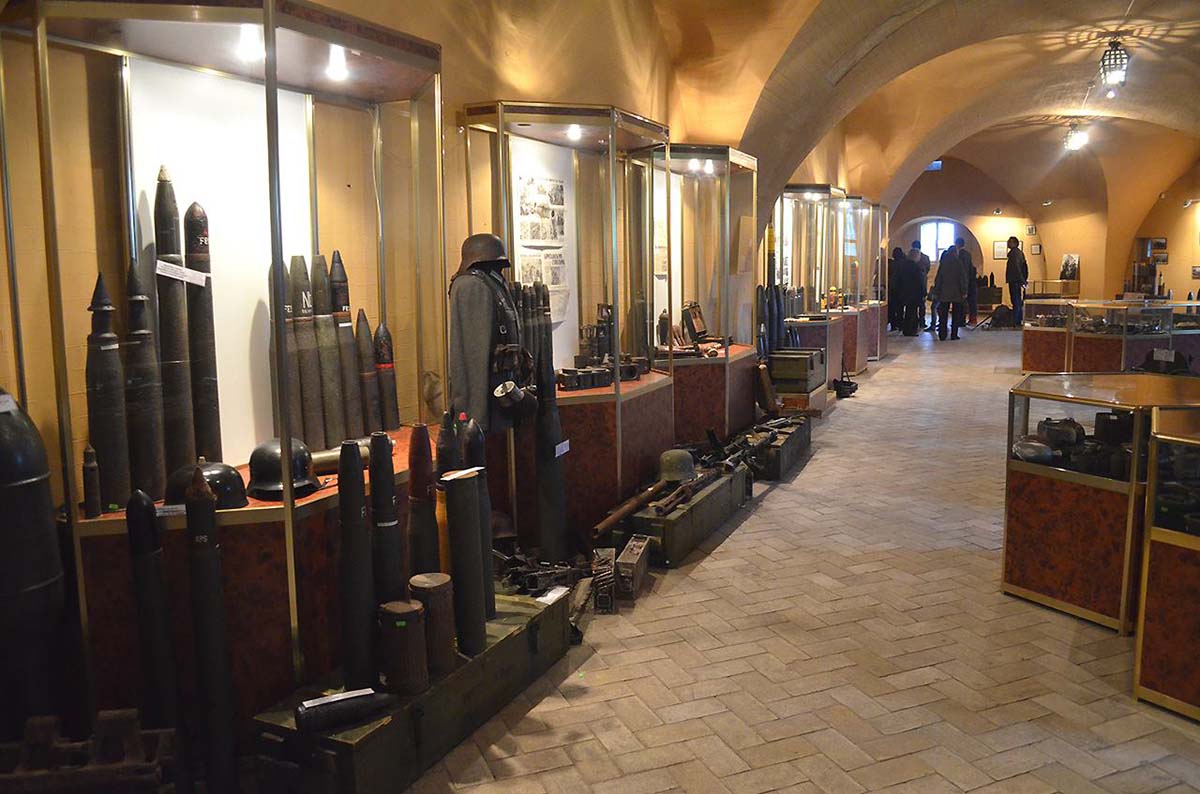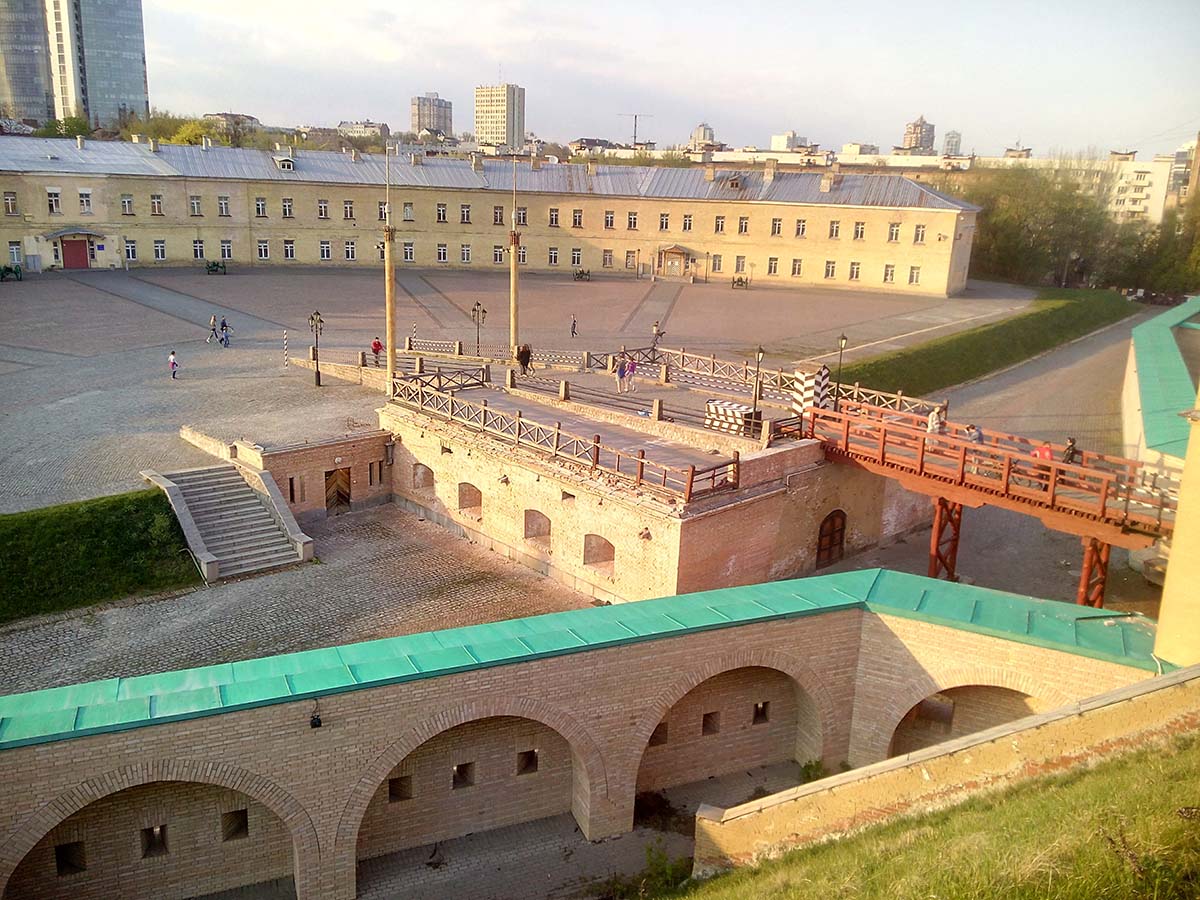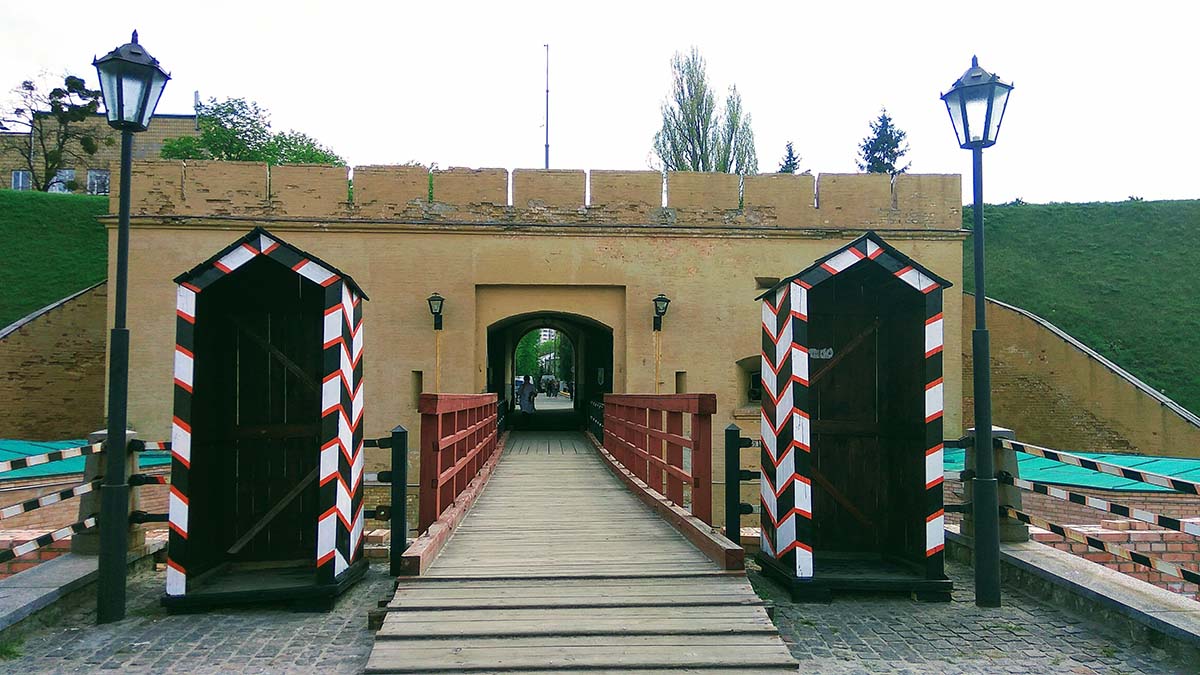Kyiv, founded according to chronicles in the 5th century after the birth of Christ, was the capital of the Russian principality under the first prince Oleg. According to Nestor’s records, the capital of the principality in the 9th century was surrounded by an earthen rampart about 1,500 meters long. Yaroslav the Wise, during his reign, for a more reliable defense of the city from enemy attacks, built a new stone fence in 1037, which, covering the outskirts of Kiev, adjoined its ends to the old earthen fence. Under Svyatopolk the Second (reigned 1083 – 1113), the fence of Kyiv was expanded by the construction of a new rampart, covering Mikhailovsky Monastery. During the ownership of the city by Prince Vladimir Olgerdovich (at the end of the 14th century), a fortified castle was built on Mount Kiselevka (the so-called Kiev castle, not far from Vozdvizhenka, which survived many battles and battles; was demolished at the end of the 17th century due to its extremely dilapidated condition).
In July 1706, Tsar Peter the Great came to Kyiv to inspect troops and prepare the fortress-city for defense in case of an attack by the Swedes. Having carried out reconnaissance, he chose a new location for the fortress in connection with the expanding city, in the area of Kievo-Pecherskaya Monastery, surrounded for protection, in 1698 – 1700, by fortress walls with towers. In August of the same year, in the presence of the tsar, according to his project, the Pechersk fortress was founded. Construction was completed in 1724 and the fortress became the most fortified stronghold in southern Russia. But over time, Kyiv fortifications ceased to satisfy the military – new types of weapons appeared, methods of warfare changed, and the city significantly expanded its borders, which were not protected by walls. The fortress began to collapse, and some of its sections were completely abandoned.
This is interesting!
1. The Kiev fortress was designed for 1,180 guns and 3,833 rifles (by the number of embrasures),
2. Powder warehouses contained 738 tons of gunpowder,
3. The artillery arsenal stored weapons for 100,000 people,
4. The number of casemates (defense) was 1,021 units,
5. The permanent garrison of the fortress was 7,093 people,
6. The hospital is designed for 1,500 people,
7. During the construction of the fortress, 1,180 houses and structures that interfered with the esplanade were demolished (the enemy could not approach unnoticed, since the space was shot through),
8. Food warehouses contained an annual supply of food for 20,000 people.
But “if there had been no happiness, but misfortune would have helped”… Due to the deterioration of the international situation in the world, in March 1810, Emperor Alexander the First issued an order that returned the Kiev fortress to operation and which stated the following: “to transfer the strengthening of Pechersk Mountain to the Engineering Department and keep it in good repair forever, together with the Kiev Fortress.” In turn, Emperor Nicholas the First, after visiting Kyiv, ordered the development of a master plan for a new fortress, which received the name New Pechersk Fortress. In March 1830, construction of modern defensive structures began, which continued from 1831 to 1851 (some fortifications were completed until 1872, an additional fort was built at Bald Mountain). In the 1860s – 1880s, a sapper camp, a sapper highway, an army camp on Syrtsa, and a military district court were built. The Kyiv fortress also included the Lysogorsky fort (a system of bastions, ravelins, lunettes), built in 1872. Nowadays, much has been destroyed for housing construction. April 25, 1897 can be considered the “beginning of the end” of the Kyiv fortress – due to the loss of strategic significance, it became a warehouse fortress, and in 1918 its military status was completely abolished.
The Kiev fortress was used for the needs of the army (headquarters, warehouses, barracks), and also as a place of detention for criminals. Nowadays, some buildings and structures have been restored and contain the museum of the Kyiv fortress, some are still used as military warehouses or commercial enterprises. The historical and architectural monument (now a monument-museum) “Kiev Fortress” was founded in 1927 as a branch of the Kyiv History Museum. The main fund of the museum is more than 17,000 exhibits. The museum includes the fortification of the Oblique Caponier with the exhibition “History of the use of structures of the Kyiv Fortress.” The exhibition presents information about famous prisoners, the death row carriage in which they were sent to execution, and the conditions of prisoners are described. The oblique caponier was built in 1844 as a defensive structure of the Hospital fortification in the New Pechersk fortress system. The oblique caponier was built to conduct flanking fire at an angle to the earthen rampart of the fortress, hence the name “Oblique”. Represents a semi-underground structure with thick walls of brick and stone with gun embrasures and gun loopholes. The ground part of the Oblique Caponier overlooks the slopes of Cherepanovaya Mountain. In the early 1860s, the caponier was turned into a political prison. Due to the cruel regime, the Oblique Caponier was called the “Kyiv Shlisselburg”.
Kiev Fortress: list of objects and what has survived
– the main Vasilkovsky ravel gate (built in 1755) – not preserved, Citadelnaya street,
– Vasilkovsky ravelin gate (built in 1755) – preserved, abandoned, not reconstructed, Citadelnaya street 3,
– upper Moscow gate (built in 1765) – preserved, reconstructed, Lavrskaya street 22/1,
– lower Moscow gate (built in 1779) – preserved, reconstructed, Lavrskaya street 33,
– defensive wall around the Far and Near Caves (built 1844-1848) – preserved, reconstructed, Bliznepecherskaya street,
– powder magazine (built 1749-1751) – preserved, reconstructed, Lavrskaya street 42/1,
– arsenal (built 1783-1801) – preserved, reconstructed, Lavrskaya street 10-12,
– Prozorovskaya tower No. 3 of the Vasilkovsky fortification (built 1838-1839) – preserved, reconstructed, Shchorsa street 34,
– tower No. 2 of the Vasilkov fortification (built 1833 – 1844) – preserved, reconstructed, Shchorsa street 44,
– tower No. 1 of the Vasilkov fortification (built 1831 – 1837) – preserved, reconstructed, Shchorsa street 38,
– northern half-tower of the Hospital fortification (built 1839-1842) – preserved, reconstructed, Hospital Street 16,
– northern gate with caponier of the Hospital fortification (built 1843-1844) – preserved, reconstructed, Hospital Street 18,
– military hospital with a bathhouse of the Hospital Fortification (built 1836-1844) – preserved, reconstructed, Hospital Street 18,
– oblique caponier of the Hospital fortification (built 1844-1846) – preserved, reconstructed, Hospital Street 24a,
– caponier of the first training ground of the Hospital fortification (year of construction 1843-1844) – preserved, abandoned, not reconstructed, Hospital Street 24,
– caponier of the second training ground of the Hospital fortification (built 1843-1844) – preserved, reconstructed, Hospitalnaya street 24a,
– caponier of the third training ground of the Hospital fortification (built in 1844) – preserved, abandoned, not reconstructed, Hospital Street 18,
– production workshops (built 1850-1854) – preserved, reconstructed, Moskovskaya street 2,
– tower No. 4 (built 1833-1839) – preserved, abandoned, not reconstructed, Staronavodnitskaya street 2,
– tower No. 6 (built 1846-1851) – preserved, reconstructed, Moskovskaya street 8,
– barracks (built 1844-1847) – preserved, reconstructed, Moskovskaya street 22,
– barracks of military cantonists (built 1835-1839) – preserved, reconstructed, Moskovskaya street 45,
– upper semicircular retaining wall (built 1853-1855) – preserved, abandoned, not reconstructed, Park Road 4,
– lower semicircular retaining wall (built in 1856) – preserved, abandoned, not reconstructed, Park Road 4,
– tower No. 5 (built 1833-1846) – preserved, reconstructed, Pechersky descent 22,
– Nikolaev Gate (tower No. 7) with a complex of buildings (built 1846-1850) – preserved, reconstructed, Ivana Mazepa Street 1.
The Kiev Fortress Museum is not only a museum of fortification; many of its buildings are closely related to the history of public liberation movements in Ukraine. The fortress garrison took an active part in the revolutionary events in Kyiv at the beginning of the last century, including the uprising of 1907. Now these are excellent places for holding public events, concerts and open-air performances. In particular, the Kiev Fortress festival was established in 2012. In 2011, the museum received a diploma as a finalist in the “7 Wonders of Ukraine” campaign.
Where is the Kiev Fortress Museum located?
Hospitalnaya street, 24a
(044) 235-01-46, (044) 288-23-41
10:00 – 18:00
